Posts Tagged ‘Faith’
You’ve Got Mail – a Manifestation Miracle Synchronicity Story
“When events seeming random happen in tandem,
It’s then we know we’re in the flow –
the Tao; the Eternal NOW.”
~ Ron Rattner, Sutra Sayings
“According to Vedanta, there are two symptoms of enlightenment. They are indications that a transformation is taking place within you toward a higher level of consciousness.
The first symptom is that you stop worrying. Things do not bother you anymore. You become lighthearted and full of joy.
The second symptom is that you encounter more and more meaningful coincidences in your life, more and more synchronicities – and this accelerates to the point where you actually experience the miraculous.”
~ Deepak Chopra, SynchroDestiny
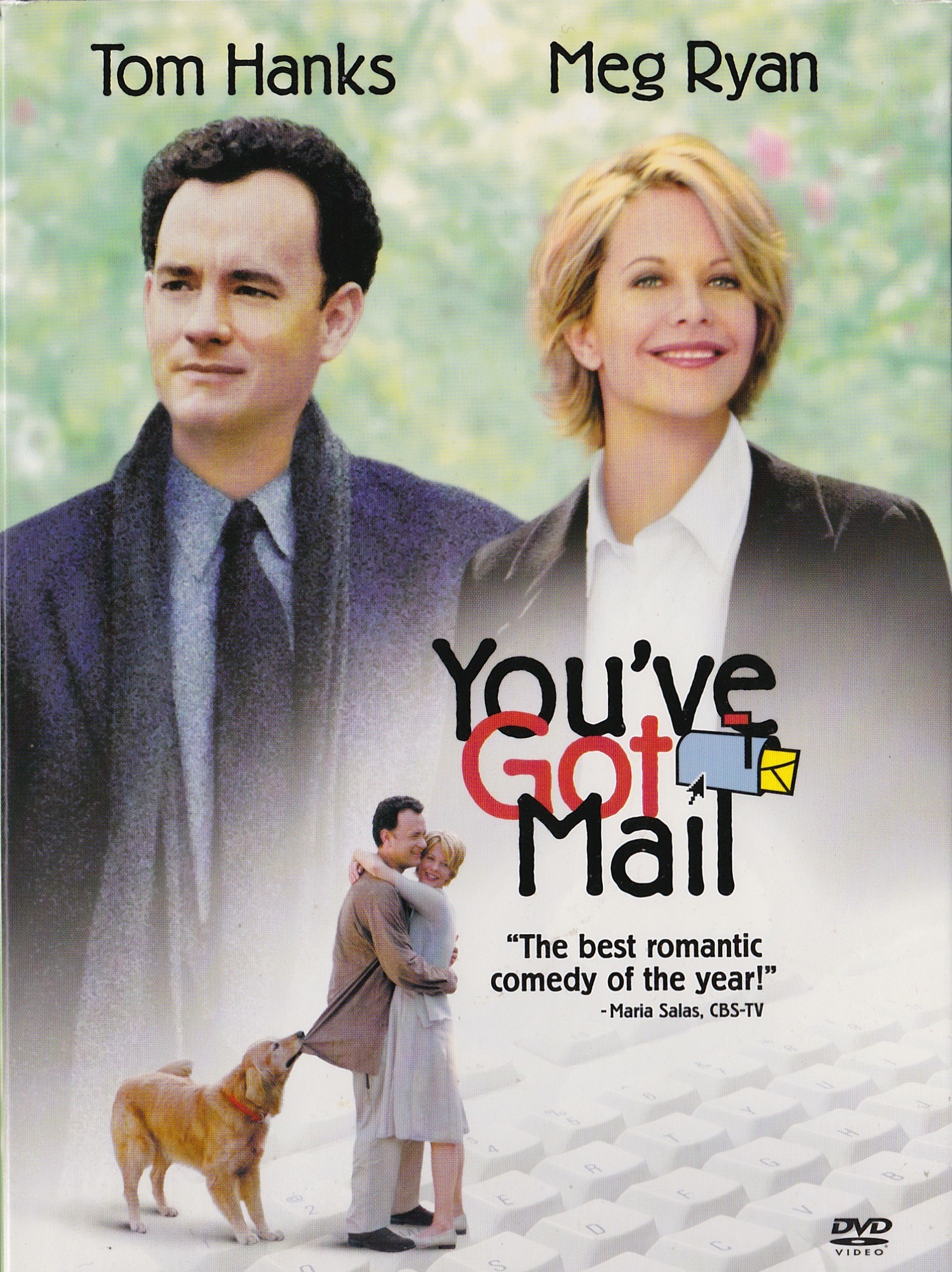
Ron’s Introduction.
Since my midlife awakening over forty years ago, I have experienced many synchronicities and serendipities, which I’ve deemed divine blessings and meaningful signs of spiritual evolution. After launching SillySutras.com I posted various amazing synchronicity stories. But soon my synchronicities began happening so frequently that I’ve hardly found time to describe them online.
Almost always I have quickly recognized these synchronicities as meaningful. Many of them have been “manifestation miracles”, noteworthy manifestations of intended circumstances or desired objects.
But recently I’ve experienced a mysterious DVD manifestation miracle, which didn’t provide a desired object or fulfillment of intentions. Statistically, the odds of this DVD’s appearance at that time and place were probably zero. However, I couldn’t quickly understand it as a meaningful divine blessing. Now, after much reflection, I may have finally solved that mystery.
So to help us all discover blessings in our synchronicity experiences, I’ve decided to share this synchronicity story online.
Ron’s “You’ve Got Mail” DVD manifestation miracle story.
On June 29, 2014, I experienced a near-death taxicab rundown, from which with divine grace I miraculously survived and slowly recovered. Almost four years later, on June 9, 2018, I suffered a painfully disabling trip and fall ‘accident’ on a concrete sidewalk near my apartment. Thereafter, for the first time since miraculously recovering from the taxicab rundown, I could hardly walk, and needed a cane to move about, even indoors. But again with divine grace I slowly regained ability to walk without a cane and disabling pain.
On Saturday afternoon, June 29, 2018, exactly four years after the taxicab rundown incident, I asked Brian Uyeno, long-time lobby attendant in my large condominium building, whether the US mail had been delivered. Brian, a movie enthusiast, promptly responded “You’ve Got Mail”. And then, gratuitously he recommended that I watch a pleasantly enjoyable twenty year old romantic comedy titled “You’ve Got Mail”, co-starring Tom Hanks and Meg Ryan.
Surprised, by Brian’s unexpected movie endorsement, I explained to him that twenty years ago (as a “high-rise hermit”) I rarely watched movies; that I’d never heard of “You’ve Got Mail” or Meg Ryan, though a few years ago I much enjoyed a legendary Tom Hanks film, “Forrest Gump”.
Thanking Brian, I told him that except for classic films, I still had little desire to watch movies. As we parted, I had no intention whatsoever of seeing “You’ve Got Mail”, despite Brian’s friendly recommendation.
A few days later, on the afternoon of July 4th, I drove to Fort Mason, San Francisco, intending to walk by the Bay. But, because of officially anticipated large attendance at scheduled holiday fireworks displays, parking was only available to permit holders. So US Park Rangers turned me around at the gate. I then futilely looked for holiday street parking, but was obliged to return home, without an intended walk by the Bay.
It was a lovely summer afternoon. So I decided to take a short walk near my apartment, for fresh air. Momentarily, I began walking westward toward the setting sunlight. But suddenly I decided to turn around, and walked eastward to the place where (on June 9th) I tripped and fell, thinking that maybe I could discover what had caused that sudden fall.
Soon I arrived at and inspected the sidewalk where I fell, without solving the trip and fall mystery. So I began to resume my eastward walk. Only a few meters from the accident site, I observed an object upon an adjacent building ledge which attracted my curiosity. So I approached it, and found a flawless “You’ve Got Mail” DVD, in an apparently brand new container. (See above photo scan).
Immediately, I assumed that the universe had miraculously produced that DVD to give me a meaningful message. So, despite my previous disinterest, I soon attentively watched “You’ve Got Mail”.
A manifestation miracle mystery.
On viewing “You’ve Got Mail” I found the film to be (as represented by Brian) an entertaining romantic comedy story, with excellent acting, graphics, musical background, and a cleverly written script. But I was unable to discern any divine or meaningful message from the universe. So the reason for the miraculous manifestation of that DVD remained an unsolved mystery, on which I continued to reflect.
In so reflecting, I initially wondered whether the “You’ve Got Mail” incident, was associated with my miraculous survival and healing from the taxicab rundown and later trip and fall injuries, which I deemed divine blessings. But I couldn’t readily discern any such connection.
On further reflection I realized that I had become so accustomed and attached to receiving miraculous manifestations of intended circumstances or desired objects that I was beginning to forget the fundamental spiritual significance of such amazing synchronicities.
Whether or not otherwise ‘meaningful’, all miraculous synchronicities in time are emblematic of Reality beyond time, and are noteworthy reminders that all earthly lives are enfolded and guided by such Reality, which is divine LOVE.
So I now see this DVD manifestation miracle as a noteworthy reminder of a blessed new life phase, which began with my miraculous survival and recovery from the near-death taxicab rundown:
For the past four years I have been experiencing subtly elevated awareness, with a very stilled mind; so that I am mostly seeing the world as movies, without fear of death, while gratefully enjoying unprecedented FAITH that divine LOVE is determining and guiding all that happens to all of us in this precious human lifetime.
Moral of the “You’ve Got Mail” mystery story.
Regardless of whether miraculous synchronicities in time involve meaningful manifestations of intended circumstances or desired objects, they are emblematic of Reality beyond time, and are noteworthy reminders that our earthly lives are enfolded and guided by divine LOVE, to which we can fearlessly surrender.
May they help us remember that
“Synchronicity is choreographed by a great,
pervasive intelligence that lies at the heart of nature,
and is manifest in each of us through what we call the soul.”
~ Deepak Chopra, Spontaneous Fulfillment of Desire
Dedication.
Especially for those of us who’ve ever wondered about ‘miraculous’ synchronicities, this story is dedicated to our growing remembrance and realization that our synchronicities or coincidences in time are spiritually significant signs of Reality beyond time. (See https://sillysutras.com/synchronicities-and-coincidences/ )
And so may it be!
Ron Rattner
Disguised Blessings
“Consciousness is the basis of all life
and the field of all possibilities.
Its nature is to expand and unfold its full potential.
The impulse to evolve is thus inherent in the very nature of life.”
~ Maharishi Mahesh Yogi
“There are no mistakes, no coincidences,
all events are blessings given to us to learn from.”
~ Elisabeth Kubler-Ross
“Life will give you whatever experience is most helpful
for the evolution of your consciousness.”
~ Eckhart Tolle
“We have two Governments in Washington:
one run by the elected people—which is a minor part—
and one run by the moneyed interests, which control everything.”
~ Studs Terkel, Hard Times: An Oral History of the Great Depression
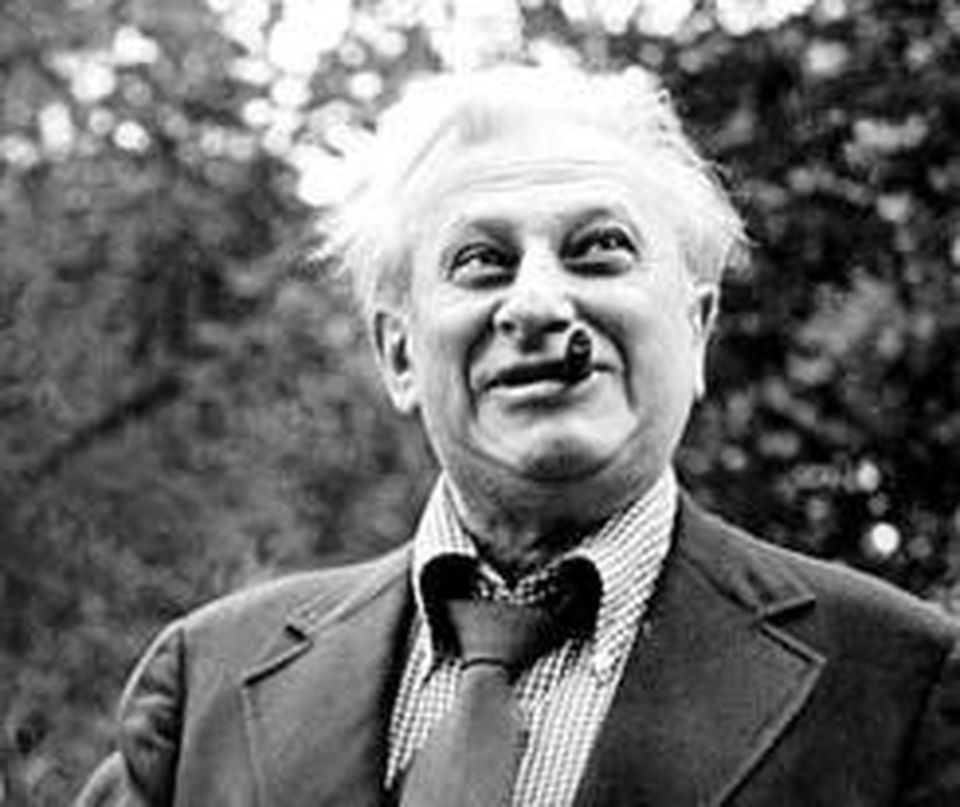
Louis “Studs” Terkel ~ May 16, 1912 – October 31, 2008
Disguised Blessings
There is an evolutionary impetus in each of us
for unfolding Consciousness to ever experience itself.
Cosmic harmony assures that, knowingly or unknowingly,
everything that happens to us is in our best interests,
because it affords us an opportunity to evolve.
Paradoxically, life’s most painful and difficult experiences can often prove the biggest blessings, because they provide greatest evolutionary incentives and opportunities.
Studs Terkel tells here how the Great Depression proved a transformative blessing for him:
“I never liked the idea of living on scallions in the left bank garret. I liked writing in comfort. So I went into business, a classmate and I. I thought I’d retire in a year or two. And a thing called Collapse, bango! socked everything out. 1929. All I had left was a pencil … There was nothing else to do. I was doing light verse at the time, writing a poem here and there for ten bucks a crack. It was an era when kids at college were interested in light verse and ballads and sonnets. This is the early Thirties. I was relieved when the Crash came. I was released. Being in business was something I detested. When I found that I could sell a song or a poem, I became me, I became alive. Other people didn’t see it that way. They were throwing themselves out of windows. Someone who lost money found that his life was gone. When I lost my possessions, I found my creativity. I felt I was being born for the first time. So for me, the world became beautiful. With the Crash, I realized that the greatest fantasy of all was business. The only realistic way of making a life was versifying. Living off your imagination.”
Studs Terkel: Hard Times: An Oral History of the Great Depression
Moral of the story:
Look for the blessing in every experience, especially every painful experience. And
When you’re feeling forlorn,
remember this:Misery is the mother of Bliss.
Ron’s explanation and epilogue to “Disguised Blessings”
Dear Friends,
In the recent Evolutionary Impetus post I explained my optimistic philosophy that everything happens for the best – to afford impetus for spiritual evolution and that, accordingly, life’s most painful and difficult experiences can often paradoxically prove the biggest potential blessings.
To illustrate how this perennial philosophy of optimism applies both individually and societally, I have posted the foregoing brief autobiographical excerpt from “Hard Times” written by Pulitzer Prize non-fiction author, historian, actor, and radio personality, Studs Terkel, recounting his personal transformation during the US Great Depression (beginning 1929).
Terkel tells that, while many who lost their money and possessions were despondent and suicidal, he felt that he “was being born for the first time”; that: “When I lost my possessions, I found my creativity.”
The “hard times” of the 1930’s described by Terkel led to the election of Franklin D. Roosevelt as 32nd US President, on November 8, 1932 [my birth-date] and to pioneering New Deal programs (like Social Security) benefiting most Americans, public work projects, financial reforms and beneficial regulations. For example, the WPA (Works Project Administration) was established and federally funded to employ most unemployed people not only on crucial public works projects but also to further the arts. Hence there were projects employing artists, musicians, actors, and writers – including Studs Terkel.
I became especially inspired by Studs Terkel on learning that as an ardent social justice advocate in hard times, he chose to follow his heart by living as an actor, author and artist rather than a lawyer, even though he had a law degree from the U of Chicago, and was admitted to the Illinois Bar.
So the Great Depression and Terkel’s experience therein showed how the philosophy of optimism can apply both individually and collectively.
Historically, in eras of rampant materialism, misery, greed and violence, invariably there have appeared wise beings to prophetically guide Humankind to societal and spiritual renaissance.
Thus, in his first presidential inaugural address Franklin D. Roosevelt assured Americans
“The only thing we have to fear is…fear itself.”
And thereupon he initiated the New Deal period in which the US government with numerous visionary public servants beneficially addressed “hard times” with groundbreaking programs and laws.
From an historical perspective I optimistically view current turbulent Trump times as the potential prelude to another period of worldwide political and spiritual renaissance. And I sincerely invite your consideration of a similar philosophy of optimism.
Optimistically viewing current worldwide problems can motivate and enable us to transcend what is happening environmentally and politically as disintegration of an old world paradigm that has become painfully and harmfully anachronous – to make way for a more enlightened and elevated new age that can and will bless all life on our precious planet and beyond.
And so may it be!
Ron Rattner
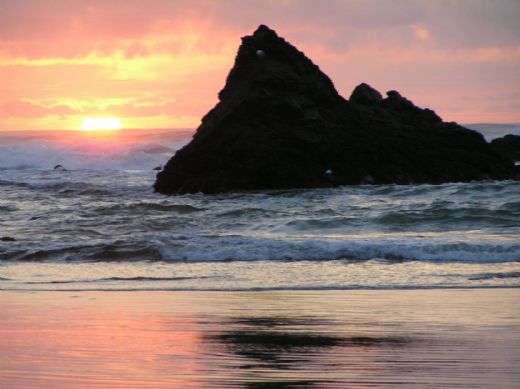
Indian Spirituality Principles*
“On a long journey of human life,
faith is the best of companions;
it is the best refreshment on the journey;
and it is the greatest property.”
~ Buddha
“Faith is the highest passion in a human being.
Many in every generation may not come that far,
but none comes further.”
~ Soren Kierkegaard
“I tell you the truth,
if you have faith as small as a mustard seed,
you can say to this mountain,
“Move from here to there” and it will move.”
~ Matthew 17:20
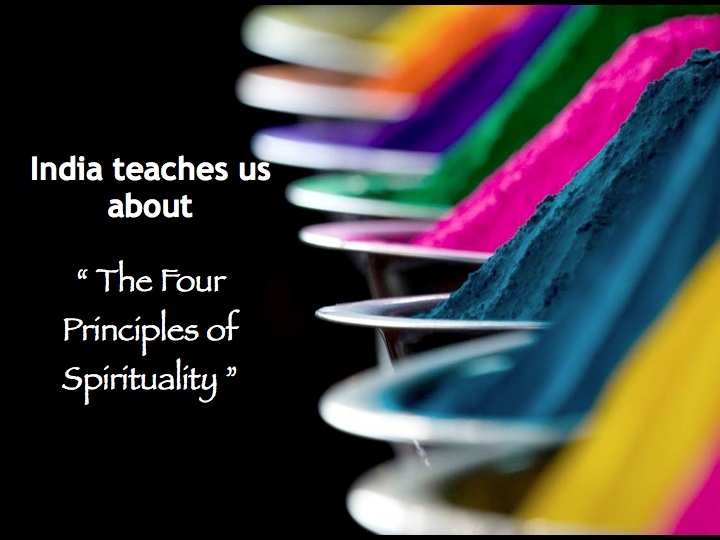
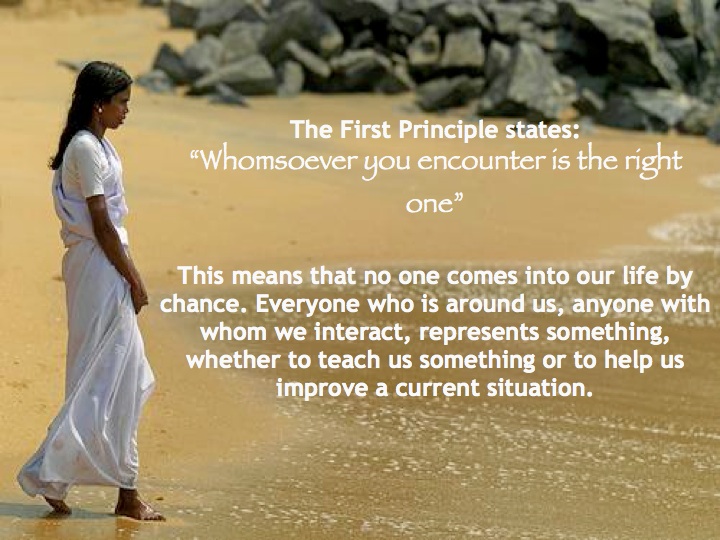
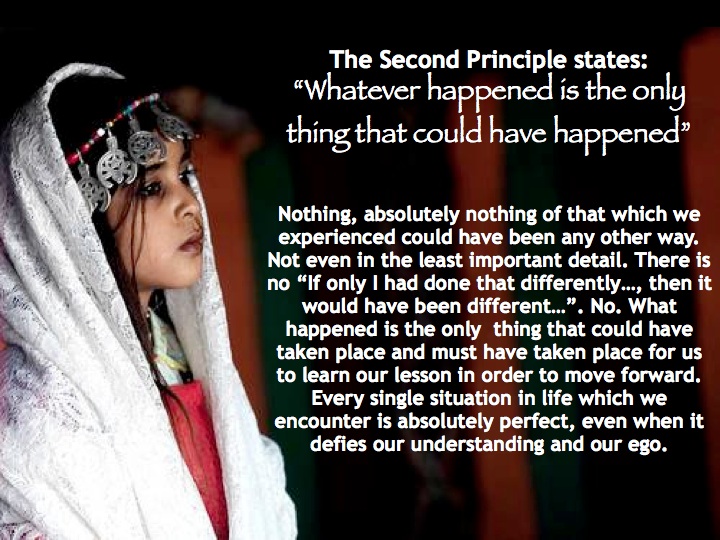
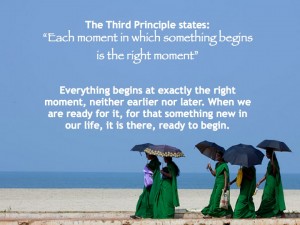
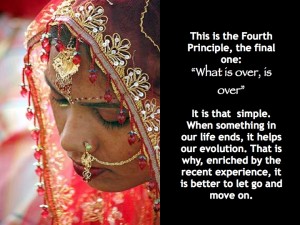
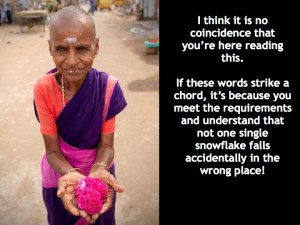
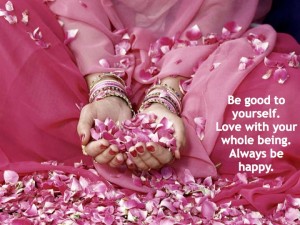
Ron’s hints for happiness:
Even if it’s difficult for you to believe these spiritual principles, your life will be happier if you live as if they were true, with faith and love. Whether or not you believe in spiritual evolution or predestiny, just pretend that everything in your life is happening for the best, in the best way and at the best time. And accept difficulties as evolutionary opportunities, without remorse or regret about the past or worry or fear of the future. Sow love, harvest happiness.
Downloadable pdf file: IndianSpirituality
* Source and author are unknown
Ron’s Optimism Commentary:
Dear Friends,
Today I share the above simply written but possibly profound article – by an anonymous author – titled “Indian Spirituality Principles”, preceded by quotes about faith. Please reflect on their message.
The article says that there are no coincidences or accidents in our lives; that everyone we encounter and everything that happens or doesn’t happen to us, can help us learn to live happier lives.
From long life experience, I have gratefully and joyfully discovered that our earth life in precious human bodies is a rare and immense evolutionary opportunity for us to advance – individually and societally – toward realization of unlimited human and spiritual potentialities.
With boundless and abiding faith that our lives are completely enveloped, controlled and guided by Divine LOVE, beyond human comprehension, imagination or description, I have realized that we are Eternal spirit incarnate with nothing to fear but fear itself. [ see e.g. I’ve Found A Faith-Based Life ]
Though it may be difficult for us to accept principles of spiritual evolution or pre-destiny, I respectfully suggest our lives will be happier if we live as if they are true.
So with faith and love let us assume that everything in our lives is happening for the best, in the best way and at the best time; so that – like philosopher Gottfried Leibniz (and unlike Voltaire and “Candide”) – we may accept difficulties as evolutionary opportunities, without remorse or regret about the past, or worry or fear of the future.
Thereby we will optimistically sow love, and inevitably harvest happiness in ‘the best of all possible worlds’.
And so it may it be!
Ron Rattner
More Manifestation Miracles: From New Balance to Asics – Ron’s Memoirs
How can the divine Oneness be seen?
In beautiful forms, breathtaking wonders, awe-inspiring miracles?
The Tao is not obliged to present itself in this way.
If you are willing to be lived by it, you will see it everywhere,
even in the most ordinary things.
~ Lao Tzu


Introduction
In prior posts I have told how after my spiritual awakening my life became filled with ever more amazing synchronicities, some of which I called “manifestation miracles”. (See https://sillysutras.com/synchronistic-manifestation-miracles-rons-memoirs/ ) Sometimes manifestation synchronicities respecting particular things – like plants – have happened to me recurrently. Here is a story of how the universe repeatedly provided comfortable running shoes for me when I needed them.
Synchronicity Story
On living alone after divorce, I began jogging almost every morning before walking to work. So I started wearing running shoes for the first time. After trying on many different shoe brands, I discovered that New Balance (which were then sold in narrow widths) fit me best. Thereafter, for many years I only bought narrow New Balance running shoes.
But gradually my feet widened and expanded with age. And in 1988, my jogging days were ended when my left leg, knee and ankle were injured in an auto accident. But I kept walking regularly and continued wearing New Balance running shoes to absorb impact of walking on hard surfaces.
After the accident my lower left leg and foot often became swollen. The New Balance shoes then sometimes felt tight around the ankle area, but from habit I continued wearing them without exploring other brands. And I wore different New Balance shoes on different days, with colors matching my clothes.
About seven years ago, I was contemplating replacement of a very worn pair of blue running shoes. But for the first time, I didn’t have to buy needed new shoes.
One afternoon, as I was taking my regular walk toward the San Francisco Marina and Golden Gate, I noticed a pair of almost new blue running shoes on a Marina park bench. (*See footnote) I walked past the shoes without examining them, assuming that they had been placed there for a few minutes by someone who was about to emerge from a boat moored at the adjoining Marina.
But on returning from the Golden Gate Bridge over an hour later, I saw the same blue shoes still on the park bench. After momentarily walking past them, I went over to the bench and examined them with curiosity. They were barely worn Asics shoes, a brand with which I was then unfamiliar.
I looked into the shoes and saw that they were a size larger than I had ever before worn. So I didn’t think they would fit me. But then I placed them beside the shoes I was wearing, and they appeared to be about the same length.
Then, I sat on the bench, tried them on, and found them quite comfortable – even more comfortable around my swollen left ankle than my New Balance shoes. So, I took them home and began wearing them regularly, though I had never before worn a pair of previously owned shoes.
They were much more comfortable than the worn out blue New Balance shoes which they replaced. And the more I wore them, the more I liked them. I liked them so much that I continued obliviously using them for many years, long after their soles were completely worn and uneven.
Then two years ago, I told the story of how the universe had manifested those shoes to Rob Tobias, a singer/songwriter musician and videographer, who is making a documentary film about me called “Walks With Ron”. When I showed him the Asics shoes, Rob expressed amazement that I was still wearing them in such a worn-out condition. Tactfully, he suggested I should replace them. And I realized that he was right; that I needed to buy a new pair of blue running shoes.
But before I looked for a new pair of blue shoes, the universe provided them.
Very soon after Rob Tobias advised me to replace my over-worn Asics, I was returning from an afternoon walk to the SF Municipal Pier when I saw a pair of blue running shoes, which apparently someone had disposed of at a curb-side near my apartment. I picked them up, saw that they were in very good condition, and that miraculously they were Asics, and exactly the same size as the comfortable blue Asics I had found years ago which now needed replacement.
So, I put them in a plastic bag and carried them home. Of course, they proved quite comfortable and I began wearing them regularly. I have so far logged in many miles in those shoes, and am still contentedly using them.
About a year after the universe provided that second pair of blue Asics shoes, I needed a new pair of neutral colored running shoes to wear with brown shade clothes. For many years, I had been wearing a neutral colored New Balance pair with soles that had become completely worn out.
So, I went to a nearby store looking for new neutral colored shoes – either New Balance or Asics. But I didn’t find anything that I liked. I left the store planning to look elsewhere. But soon that became unnecessary.
For the third time the universe presented me with exactly the shoes I was looking for.
Within two weeks, on a ledge near my apartment building, I found an almost brand new pair of neutral colored running shoes. Again they were perfectly comfortable. And again they were Asics – a third Asics “manifestation miracle”. I regularly wear them with pleasure, when not wearing my blue Asics.
Conclusion
I confess that, while I haven’t become blasé about these miracles, I am no longer so surprised when they happen. But, with utmost gratitude, I accept them as signs and reminders that I am living a very lucky and blessed life, and becoming ever more harmonious with Nature and ‘in-sync’ with the unseen implicate order of the universe.
Footnote
*The shoes were located very near the same place where I later fortuitously discovered (in a dumpster) a rare video showing my 1982 trip to India. See https://sillysutras.com/synchronicity-story-miraculously-manifesting-memories-of-a-spiritual-pilgrimage-to-india-and-nepal/
Meeting Tibetan Buddhists ~ Ron’s Memoirs
“The first preliminary practice consists of recognizing and giving value in its right measure to the precious human existence and the extraordinary opportunity that it gives to us to practice Dharma and to develop spiritually.”
~ Kalu Rinpoche – Foundations of Tibetan Buddhism
“[T]he reality of the world today is that grounding ethics in religion is no longer adequate. This is why I believe the time has come to find a way of thinking about spirituality and ethics that is beyond religion.”
~ H.H. the Dalai Lama – Beyond Religion: Ethics for a Whole World
“In the present circumstances, no one can afford to assume that someone else will solve their problems. Every individual has a responsibility to help guide our global family in the right direction. Good wishes are not sufficient; we must become actively engaged.”
~ His Holiness the Dalai Lama, from “The Path to Tranquility: Daily Wisdom”
![Ven. Kalu Rinpoche [1905—1989]](https://sillysutras.com/wp-content/uploads/Kalu-Rinpoche_0001-642x1024.jpeg)
Ven. Kalu Rinpoche [1905—1989]
Introduction. I have been blessed by meeting and learning from many spiritual teachers, in addition to my beloved Guruji, Shri Dhyanyogi Madhusudandas. Especially inspiring and helpful have been certain Tibetan Buddhist teachers.
Soon after my mid-life spiritual awakening, I was first exposed to Buddhist teachings via radio. For many years, I regularly listened to masterful New Dimensions Radio interviews by Michael Toms of spiritual teachers and authors, often Buddhists. And on Sunday nights, while driving home from visiting my parents, I regularly heard on KPFA recorded talks by Buddhist teacher, Alan Watts, a brilliantly insightful and articulate former Episcopal priest who had ‘converted’ to Zen Buddhism and moved from the UK to Marin County, California. Also for a short time I attended Sunday morning dharma talks and Zazen meditations at the beautiful and bucolic Green Gulch Zen Center in Marin County.
After my 1978 shaktipat initiation by Guruji I mostly focussed on Hindu spiritual teachings. But I remained curious about other spiritual and mystical traditions, especially non-duality teachings which I found not only in Advaita Vedanta, but also in Buddhism, Taoism and Sufism. (Ultimately, beyond religion, I became most focussed on certain universal wisdom principles at the heart of all enduring spiritual, religious, philosophical and ethical paths – like the “Golden Rule”. And to further those teachings I established The Perennial Wisdom Foundation.)
During a 1979 apparent ‘near death’ experience, I had visions of ethereal, luminescent and intricate mandalas – like those associated with Vajrayana Buddhism – which sparked much curiosity about Tibetan Buddhists and their mandalas. Soon afterwards I was synchronistically blessed with darshan of Tibetan lamas who in diaspora had started coming to the West. Most important for me were H.H. the Dalai Lama – who remains a living inspiration for me, and Kalu Rinpoche, a very venerable Tibetan Buddhist meditation master, now deceased and reborn.
For over thirty years I have been deeply inspired by core Buddhist teachings, as practiced by the Tibetans, though I never became a practicing Buddhist. In the 1980’s I honored that inspiration by receiving refuge and taking Boddhisattva vows from Kalu Rinpoche, and by receiving empowerments and teachings from both Kalu Rinpoche and the Dalai Lama, as well as other Tibetan lamas.
Taking Refuge. After meeting Kalu Rinpoche, I soon took refuge from him in the three jewels of Buddhism – the Buddha, sangha and dharma. In a brief refuge ceremony with this great yogi, I thereby symbolically committed to honor the Buddha – as my own true nature – and those teachings and communities which would advance realization of that Buddha nature.
Boddhisattva vows. Shortly after taking refuge I was inspired to take Boddhisattva vows from Kalu Rinpoche to altruistically help all sentient beings end their sufferings.
In taking these vows I was deeply inspired by this selfless Tibetan Buddhist ideal exemplified by the Dalai Lama, Kalu Rinpoche and many other Lamas. Never content with only their own spiritual evolution and salvation, Buddhist Boddhisattvas postpone their own ‘nirvana’ choosing to take continuing rebirths in order to serve humanity until every sentient being has been helped to liberation. For example, His Holiness the 14th Dalai Lama, is latest in a long line of Boddhisattva Dalai Lamas, believed to be manifestations of Avalokiteshvara or Chenrezig, the Bodhisattva of Compassion and the patron saint of Tibet.
Taking Boddhisattva vows symbolically marked an important transition from my prior aspiration to escape through spiritual “enlightenment” from this world of inevitable suffering. Rather than yearning to leave this crazy world forever, I took those vows aspiring to stay here in ways which might help all life everywhere, as I continued to observe and clear my own mental defilements.
Enlightenment as a Process. After taking these Buddhist vows, I didn’t expect an early departure from space/time causality reality. Instead, influenced by Buddha’s teachings that conditioned existence (samsara) has been going on for so long that all beings may have been each other’s parents in some lifetime, I began regarding “enlightenment” as a virtually endless evolutionary process in which – except for Buddhas and Boddhisattvas – we unwittingly participate for eons.
The Tibetan Tulku Tradition. Tulkus are emanations of those who retain spiritual consciousness and continuity through successive births. Except perhaps for rare Buddhas and very evolved beings, on rebirth almost everyone experiences ‘instant amnesia’ about conscious details of other lifetimes and prior spiritual learning, which details remain in our subconscious memory. The Tibetan Tulku tradition, aims to facilitate fulfillment of boddhisattva vows by locating reborn Lamas at an early age and training them from childhood to rekindle their consciousness of Buddhist teachings and practices. Tibetans have elaborate tests to prove that newly reborn Tulkus are truly who the waiting elders think they are, such as checking whether the child can recognize acquaintances or possessions from his previous life or answer questions only known to his former life-experience. For example, this process is portrayed in Kundun, the classic biographical film about the Dalai Lama. Some rare Tibetans (like the Karmapa) are able to foretell before dying where they will consciously take rebirth.
Karma. The Tibetans’ Tulku tradition is inextricably intertwined with their teachings about karma, rebirth, and Boddhisattvas. Although virtually all mystical traditions accept karma, afterlife and reincarnation, the Tibetan Buddhists’ karma and rebirth teachings and their Boddhisattva traditions especially helped me enhance identification with spirit while diminishing my psychological fear of bodily death.
According to Eastern philosophies, Karma is universal law of cause and effect applied at subtle levels to everything we think, do or say during repeated rebirths as supposedly separate beings. A similar concept is implicit in Western teachings that we reap as we sow. [Galatians 6:7-9]
As long as we self-identify as subjects separate from supposed objects of our choice or intention, our exercise of supposed free will creates karmic causes and conditions. Buddhism teaches that karma means “volitional action.” Any thought, word or deed conditioned by samsaric illusion – for example, defilements like desire, hate, or passion – creates karma. On death, the unexperienced effects of karmic causes, result in unavoidable rebirths.
What is reborn? “Reincarnation” is commonly understood to be the transmigration of a “soul” – viz. apparently circumcised spirit – to another body after physical death. But in Buddhism there is no concept of separate soul or individual self that survives death. Yet Buddhists believe in rebirth.
So, what do Buddhists say is reborn to experience karmic causes and conditions, or to fulfill Boddhisattva vows? I will simplistically and metaphorically share my understanding.
I was once told by Swami Sivananda Radha that during a private audience with the Dalai Lama she asked, “In view of Buddhist teaching that there is no separate self or soul, what reincarnates?” And His Holiness replied: “An energy vortex.”
The Dalai Lama’s explanation that an “energy vortex” is what incarnates was consistent with Western science. Since Einstein’s groundbreaking theory of relativity, quantum physicists have confirmed that in this world of space/time and causality everything is energy – every impermanent form and phenomenon, whether or not perceptible or measurable.
And for millennia seers and mystics have revealed that subtle mental energy bodies associated with physical bodies survive death of those physical bodies. Just as computers need an operating system to function, so do physical bodies. Like computers which operate via software, physical bodies are controlled by subtle mind-stuff energies (chitta). And when – like computers – physical bodies inevitably deteriorate and die, their mental software survives, and is reusable.
Thus, just as I am able to use with my new iMac the same OS X software system that operated my old iMac, I can (and may for eons) operate other physical bodies with the same mind-stuff energy that is animating this one. And those other physical bodies which will be using my pre-existing mental software, will probably display many of the same ‘operating features’ as my prior physical bodies. These mental operating systems can be gradually ‘up-dated’. But this usually requires a very slow process of intentional self-discovery and removal of mental obscurations and defilements.
Precious human birth. Before my spiritual awakening, like most other people, I never thought about being human, rather than some other life-form. But after meeting Guruji, I learned that Eastern spiritual paths identify human incarnation as an extraordinarily precious opportunity to evolve – beyond that of any other life-form; that Buddhist and Hindu teachings say that for evolution it is better to be born human than even in a heavenly realm.
Tibetan Buddhist teachings especially helped me realize that human birth is extraordinarily precious and rare. They persuaded me that although the unexperienced effects of karmic causes result in unavoidable rebirths, there is no guarantee that we will evolve on rebirths; that we obtain human bodies because of good deeds in former lives, but that without living compassionately and mindfully with continuing determination to transcend selfish behaviors we squander a rare chance to evolve spiritually.
In October 1982, in San Francisco, I participated together with hundreds of others in a Kalachakra empowerment given by Kalu Rinpoche. In describing the history and rare significance of that ceremony, Lama Kalu explained that our attendance arose from beneficial causes and conditions so mysteriously and statistically rare as to be well beyond ordinary human comprehension – like Jesus’ metaphor of a camel passing through the eye of a needle. For example, according to the Buddha, obtaining a human birth and following truth teachings is as unlikely as it is for a blind turtle to put its head through a single yoke which is cast on the oceans of this world.
In all events, Kalu’s teaching deeply impressed me with the preciousness and impermanence of human birth, and the importance of using it to evolve spiritually.
More memorable experiences with Kalu Rinpoche. Before receiving the Kalachakra empowerment, in 1982 I attended a public talk by Kalu Rinpoche at Fort Mason, San Francisco, about the Mahamudra experience, which he described (through an interpreter) as the quintessence of all Buddhadharma. Though I didn’t understand much of what was said, I intuited that I was in the presence of a great meditation master – like Guruji.
After talking about Mahamudra, Lama Kalu said that to help us understand Mahamudra experience he would give us a brief demonstration of that state of being. Whereupon, with ‘miraculous’ mind-power, he dramatically transformed the energy in that small lecture room. Suddenly my mind went completely still and I experienced a rare state of peace and oneness beyond comprehension or expression. By Kalu Rinpoche’s immense power as a meditation master, he briefly but unforgettably shared with us a glimpse of his rare and exalted state of clear mind.
A few years later, circa 1986-7, I had another memorable experience of Kalu Rinpoche’s powerful presence. Together with my daughter, Jessica, and friends Mark and Marsha Newman, I attended a public talk by him at the San Francisco Unitarian Universalist Church, one of the city’s largest religious sanctuaries. After waiting in a long line for some time, we managed to be seated in pews near the very back of the church.
Just as Kalu Rinpoche had ‘magically’ transformed the energy in the small lecture room where I heard him describe the Mahamudra experience, the energy ambience in that entire large church was palpably transformed upon his appearance at the pulpit. My daughter Jessica, had never before experienced such a spiritually powerful presence and was deeply impressed. Afterwards, she posted a picture of Kalu Rinpoche in her room, and though she never again saw him she was emotionally affected and cried on news of Kalu’s death in May, 1989.
After seeing Kalu Rinpoche at the Unitarian Church, I saw him again when he was interviewed by Michael Toms at the New Dimensions San Francisco radio studio. On his arrival at the studio he was introduced to staff and to me (as a New Dimensions director). Whereupon he came up to each one of us and humbly introduced himself with a friendly handshake. At that gesture, I was impressed with that great yogi’s humility – like Guruji’s. Later I was inspired to observe that: “The more we know we’re no one, the more we’re seen as someone”.
Learning to keep faith despite disillusionment. After many years of questioning, I have found a faith based life – beyond beliefs, dogmas, theologies or personalities. I was very much helped and encouraged in this process by another important and synchronistic encounter with Kalu Rinpoche, at a time of great disillusionment in my life,.
In the 1980’s after Guruji’s return to India I learned with shock that certain private behavior of a spiritual teacher (other than Guruji) with whom I had a close relationship was significantly inconsistent with his teachings and outer image. Though by this time, I knew of numerous instances in which well known spiritual teachers were credibly shown to be flawed humans, like the rest of us. But this was the first time that it happened with a teacher with whom I felt a close rapport and had spent much time. And I was emotionally upset and confused.
Whereupon, I learned that Kalu Rinpoche would be appearing for a morning talk and darshan at Kagyu Droden Kunchab a San Francisco Center dedicated to the ultimate benefit of all sentient beings, which he founded; that his Buddhist teachings would be followed by a question and answer session. I desperately wanted Kalu’s guidance about my crisis of faith. But I had to be in court that morning. So dressed in suit and tie, I came to the darshan with very limited time to spend there.
By the time that Kalu ended his talk, I had only thirty minutes left before needing to leave for court. Whereupon the translator announced that Rinpoche would now entertain questions, and virtually everyone in the room – including me – raised a hand for recognition. ‘Miraculously’ Kalu beckoned first to me to ask my question, which was:
“What is the proper attitude of a student on discovery of a teacher’s behaviors inconsistent with the teachings?”
Whereupon Lama Kalu gave an extremely wise and helpful thirty minute dissertation in response to my inquiry. As soon as he finished and began answering the next question, I was obliged to leave for court. I cannot recount details of what Kalu said, but the unforgettable essence of his answer was:
“Never lose faith in the teachings, even if you lose faith in the teacher.”
Only after years of introspection and more instances of disillusionment with teachers and others upon whom I had mistakenly projected flawless ethics, was I able to fully grasp Kalu’s wise teaching. During that process, I decided that “incarnation is limitation”; that no one is infallible; and, that “it is better to live the teachings, and not teach them, than to teach the teachings and not live them”.
A few years after my last face to face encounter with Lama Kalu, I was memorably reminded of his meditation mastery and his message of faith. On a beautiful week-end day while hiking in the forested higher elevations of Point Reyes National Sea Shore nature reserve, I decided to sit on a rock from which I enjoyed a panoramic view out into the ocean. As I beheld that inspiring nature scene in a meditative mood, Lama Kalu Rinpoche’s smiling visage fleetingly appeared in my inner vision. We never again met in this life, but I shall remain ever grateful for his blessings. With his encouragement I have never lost faith in this precious human life and in the infinite opportunities it affords us.
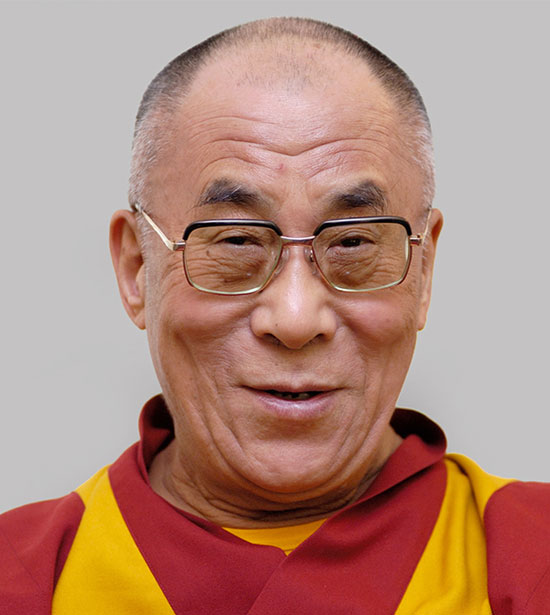
H. H. The 14th Dalai Lama, Tenzin Gyatso.
His Holiness The 14th Dalai Lama, Tenzin Gyatso.
Of all prominent living people, I am most inspired by H.H. the Dalai Lama – the spiritual leader (and former political leader) of Tibet. Apart from his Holiness’s spiritual attainments, which are beyond my comprehension, I am especially inspired by his universal compassion, wisdom, humility and humor.
I see him as a living exemplar of human potential – a Boddhisattva helping countless sentient beings and all life on our precious planet in infinite ways beyond religion or politics. Although my encounters with His Holiness have been impersonal – only as part of large audiences or via videos or writings – I feel a deep connection and harmony with him as a revered fellow human being.
Ever since an October, 1989 darshan, I have wondered whether that harmonious connection began in other lifetimes. At that time, I had the good fortune of being one of a limited number of people privileged to attend a ceremony to be conducted by His Holiness atop sacred Mount Tamalpais in Marin County, in a natural outdoor amphitheater. Because of limited highway access, the Dalai Lama was scheduled to arrive by helicopter. But his flight was delayed, and so we awaited his arrival.
Instead of waiting in the amphitheater, I decided to meditate in a nearby nature place. Then, on contemplating the Dalai Lama I experienced such heartfelt affinity and reverence, that I began an intense and protracted devotional crying jag. I became so overwhelmed with emotion of devotion that I was unable to stop weeping and enter the amphitheater even when I heard the sounds of the helicopter’s arrival. Ultimately, a compassionate Buddhist woman, who on her arrival had observed me crying, came out and taking me by the hand led me, still weeping, into the amphitheater.
The Dalai Lama is the only Tibetan teacher, including Kalu Rinpoche, with whom I have continuously felt such a deep devotional rapport – like my rapport with Guruji. He is regarded by Tibetans as the Bodhisattva of Compassion, and perhaps it is this subtle energy which opens my heart. In all events, though I don’t yet remember another life as a Tibetan, I intuit an important karmic connection with His Holiness, and regard him as a role model for living an ethical and compassionate life, regardless of our religious or cultural history.
Here are some of the ways in which I have been inspired by the Dalai Lama’s life and teachings:
Compassion. In his ever inspiring deportment, talks, and writings, His Holiness manifests and emphasizes the crucial importance of compassionate behavior – even with enemies. Drawing great inspiration from him, I have gradually come to regard everyone I meet – including those with whom I have disagreements – as spiritual siblings – brothers or sisters all sharing the same aspirations for happiness and peace of mind, despite superficial cultural differences. And, despite my pronounced lawyer’s tendencies to combatively judge all adversaries, more and more I have even found compassion for those whose ignorance of their true spiritual identity leads them to egregiously harmful behaviors. For example, at a time when I considered former US President George Bush, Jr., a war criminal and mass murderer, His Holiness publicly described him as “a nice man.” Hopefully, he privately influenced Bush – with whom he shares the same July 6th birthdate – to adopt more compassionate ethics.
Humility. His Holiness is regarded by Tibetans and by many others as a living Buddha. For, example, a Tibetan emigre attending a Tibetan Losar new year ceremony conducted in Minneapolis by His Holiness told a newspaper reporter there that “for Tibetans in exile, seeing the Dalai Lama is akin to Christians getting to meet Jesus”. Moreover, especially since his nomination for the Nobel Peace prize, His Holiness has become like a world-wide rockstar celebrity, attracting capacity audiences for all public appearances. Yet he remains exceptionally humble, describing himself as “a simple Buddhist monk” and member of the Human family. Despite his renown as a living sage, I have heard him several times answering questions with “I don’t know”. In my experience, this is very rare behavior for an elevated Eastern spiritual teacher. For example, I have never heard of any such humble response from elevated Hindu teachers regarded as avatars or ‘god-men’. I was especially drawn to Guruji who (despite his Hindu acculturation) was exceptionally humble, and even told my friend Joy Massa: “follow your heart, even if it contradicts my words”.
I have always felt ambivalent about spiritual teachers who pontificate as if they are infallible. For me, such behavior encourages adulation over inspiration. And I am uncomfortable with any spiritual group or tradition emphasizing adulation of the incarnate over adoration of the Infinite.
In my opinion, selfless humility is a supreme virtue. It is especially rare in prominent people who are subject to great flattery, praise and adulation, which can easily entice and inflate ego, the enemy of compassion and humility. Those like the Dalai Lama, Guruji, Gandhi and Einstein, who have resisted such ego temptations I consider inspiring great beings.
Universal morality and ethics beyond religion. In public talks and in his recently published book “Beyond Religion: Ethics for a Whole World” His Holiness explains how inner values “are the source of both an ethically harmonious world and the individual peace of mind, confidence and happiness we all seek”, concluding that “the time has come to find a way of thinking about spirituality and ethics that is beyond religion” which alone “is no longer adequate”. To me, this is a crucially inspiring message, which completely coincides with my philosophy and life experience. Before publication of “Beyond Religion” I established The Perennial Wisdom Foundation dedicated to elevating awareness of universal principles – like the ‘Golden Rule’ – at the heart of all enduring religious, spiritual, and ethical traditions. And His Holiness’s book and teachings have encouraged me to continue pursuing that path.
Politics, Economics and Ecology. Just as the Dalai Lama’s views on universal morality and ethics beyond religion have paralleled my views and inspired and encouraged me to pursue them, His Holiness supports liberal political, economic and ecological views with which I have long identified and pursued as a social justice advocate.
He recognizes as “a very great thing” Mahatma Gandhi’s sophisticated political implementation of ahimsa – the ancient moral teachings of nonviolence and non-injury. As an engaged Buddhist, the Dalai Lama outspokenly endorses Gandhian non-violent and compassionate political social action benefitting the majority of citizens, especially those underprivileged and exploited.
Thus, he rejects capitalist economics, as focussed on greed, gain and profits and outspokenly endorses democratic Marxist theory of equitable access to means of production and distribution of wealth. But, he rejects as lacking compassion and encouraging class hatred the so-called Marxism of the failed totalitarian former USSR, or China, and he objects to their excessive emphasis on class struggle.
Ecologically the Dalai Lama recognizes that Earth is severely threatened by ignorant human greed and lack of respect for all life on our precious planet. Accordingly, he urges that we become actively engaged as a global human family to resolve this crisis with compassionate solidarity, not just as a matter of morality or ethics but for survival of life as we know it. (See e.g. Spiritual People in a Perfectly Crazy World)
Conclusion. Thus I am supremely grateful for the wisdom and inspiration bestowed by Tibetan teachings and teachers, especially through His Holiness The 14th Dalai Lama, Tenzin Gyatso, who for me is a living exemplar of human potential – a Boddhisattva helping countless sentient beings and all life on our precious planet in infinite ways beyond religion or politics.
Dalai Lama – Many Faiths, One Truth

Many Faiths, One Truth
By Tenzin Gyatso
WHEN I was a boy in Tibet, I felt that my own Buddhist religion must be the best — and that other faiths were somehow inferior. Now I see how naïve I was, and how dangerous the extremes of religious intolerance can be today.
Though intolerance may be as old as religion itself, we still see vigorous signs of its virulence. In Europe, there are intense debates about newcomers wearing veils or wanting to erect minarets and episodes of violence against Muslim immigrants. Radical atheists issue blanket condemnations of those who hold to religious beliefs. In the Middle East, the flames of war are fanned by hatred of those who adhere to a different faith.
Such tensions are likely to increase as the world becomes more interconnected and cultures, peoples and religions become ever more entwined. The pressure this creates tests more than our tolerance — it demands that we promote peaceful coexistence and understanding across boundaries.
Granted, every religion has a sense of exclusivity as part of its core identity. Even so, I believe there is genuine potential for mutual understanding. While preserving faith toward one’s own tradition, one can respect, admire and appreciate other traditions.
An early eye-opener for me was my meeting with the Trappist monk Thomas Merton in India shortly before his untimely death in 1968. Merton told me he could be perfectly faithful to Christianity, yet learn in depth from other religions like Buddhism. The same is true for me as an ardent Buddhist learning from the world’s other great religions.
A main point in my discussion with Merton was how central compassion was to the message of both Christianity and Buddhism. In my readings of the New Testament, I find myself inspired by Jesus’ acts of compassion. His miracle of the loaves and fishes, his healing and his teaching are all motivated by the desire to relieve suffering.
I’m a firm believer in the power of personal contact to bridge differences, so I’ve long been drawn to dialogues with people of other religious outlooks. The focus on compassion that Merton and I observed in our two religions strikes me as a strong unifying thread among all the major faiths. And these days we need to highlight what unifies us.
Take Judaism, for instance. I first visited a synagogue in Cochin, India, in 1965, and have met with many rabbis over the years. I remember vividly the rabbi in the Netherlands who told me about the Holocaust with such intensity that we were both in tears. And I’ve learned how the Talmud and the Bible repeat the theme of compassion, as in the passage in Leviticus that admonishes, “Love your neighbor as yourself.”
In my many encounters with Hindu scholars in India, I’ve come to see the centrality of selfless compassion in Hinduism too — as expressed, for instance, in the Bhagavad Gita, which praises those who “delight in the welfare of all beings.” I’m moved by the ways this value has been expressed in the life of great beings like Mahatma Gandhi, or the lesser-known Baba Amte, who founded a leper colony not far from a Tibetan settlement in Maharashtra State in India. There he fed and sheltered lepers who were otherwise shunned. When I received my Nobel Peace Prize, I made a donation to his colony.
Compassion is equally important in Islam — and recognizing that has become crucial in the years since Sept. 11, especially in answering those who paint Islam as a militant faith. On the first anniversary of 9/11, I spoke at the National Cathedral in Washington, pleading that we not blindly follow the lead of some in the news media and let the violent acts of a few individuals define an entire religion.
Let me tell you about the Islam I know. Tibet has had an Islamic community for around 400 years, although my richest contacts with Islam have been in India, which has the world’s second-largest Muslim population. An imam in Ladakh once told me that a true Muslim should love and respect all of Allah’s creatures. And in my understanding, Islam enshrines compassion as a core spiritual principle, reflected in the very name of God, the “Compassionate and Merciful,” that appears at the beginning of virtually each chapter of the Koran.
Finding common ground among faiths can help us bridge needless divides at a time when unified action is more crucial than ever. As a species, we must embrace the oneness of humanity as we face global issues like pandemics, economic crises and ecological disaster. At that scale, our response must be as one.
Harmony among the major faiths has become an essential ingredient of peaceful coexistence in our world. From this perspective, mutual understanding among these traditions is not merely the business of religious believers — it matters for the welfare of humanity as a whole.
Tenzin Gyatso, the 14th Dalai Lama, is the author, most recently, of “Toward a True Kinship of Faiths: How the World’s Religions Can Come Together.”
Originally published as an Op-Ed by New York Times on May 24, 2010